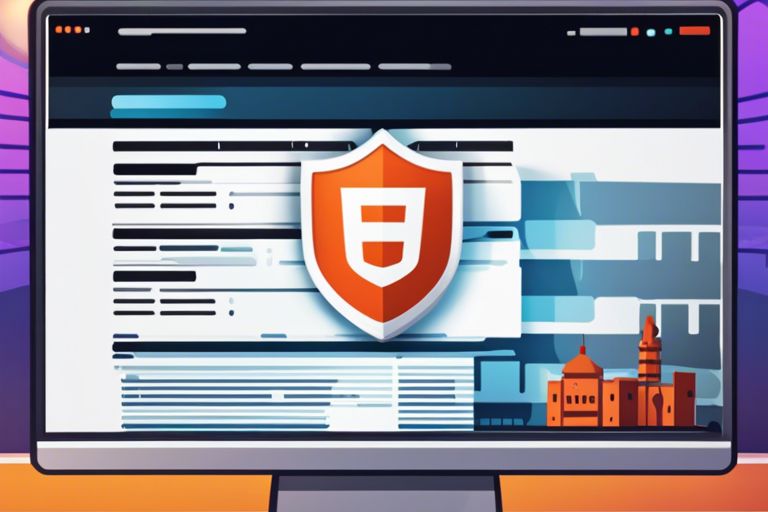Regarding developing software and applications, security should always be a top priority. As cyber threats continue to evolve, developers need reliable tools to ensure that their code is robust and protected from vulnerabilities. In this blog post, we will explore some of the best secure development tools available in the market today. From static code analysis to penetration testing tools, these solutions are designed to help developers identify and mitigate security risks throughout the development process. By incorporating these tools into their workflows, developers can enhance the security posture of their applications and contribute to a safer digital ecosystem.
Key Takeaways:
- Static Application Security Testing (SAST) Tools: These tools analyse an application’s source code without executing it and identify possible security vulnerabilities.
- Dynamic Application Security Testing (DAST) Tools: DAST tools assess applications during runtime and detect security issues, making them crucial for ongoing security testing.
- Interactive Application Security Testing (IAST) Tools: IAST tools combine elements of SAST and DAST, operating during runtime like DAST tools but providing deeper analysis like SAST tools.
- Software Composition Analysis (SCA) Tools: SCA tools help identify and manage open source components in an application to ensure that they are free from security vulnerabilities.
- Integrated Development Environment (IDE) Security Plugins: These plugins enable developers to identify and fix security issues directly within their development environment, promoting secure coding practices.
Code Analysis Tools
Static Application Security Testing (SAST)
Static Application Security Testing (SAST) tools are imperative in identifying vulnerabilities in the source code by analysing the application’s codebase without executing the program. These tools can detect issues such as input validation errors, authentication issues, and potential security flaws early in the development process, allowing developers to address them before they become significant risks.
Dynamic Application Security Testing (DAST)
Dynamic Application Security Testing (DAST) tools, on the other hand, test an application while it is running to identify security vulnerabilities. By simulating attacks on the application, DAST tools can detect issues like SQL injection, cross-site scripting, and other common security threats. This real-time testing approach provides a valuable insight into how well an application can withstand different types of attacks.
DAST tools play a crucial role in ensuring the security of web applications by identifying vulnerabilities that may not be apparent during static code analysis. By conducting tests in a live environment, developers can get a comprehensive understanding of their application’s security posture and implement necessary measures to protect against potential cyber threats.
Security and Compliance Libraries
Encryption and Cryptography Libraries
Encryption and cryptography libraries are crucial tools for securing sensitive data by encoding information so that only authorised parties can access it. These libraries provide algorithms and functions for encrypting data at rest and in transit, protecting it from unauthorised access and ensuring confidentiality and integrity.
Secure Coding Standards and Frameworks
Secure coding standards and frameworks are crucial for developers to follow best practices and guidelines for writing secure code. These tools help in identifying and mitigating common security vulnerabilities, such as SQL injection, cross-site scripting, and buffer overflows. By adhering to secure coding standards and using established frameworks, developers can build more resilient and secure applications.
Using secure coding standards and frameworks can significantly reduce the risks of security breaches and vulnerabilities in software applications. These tools provide a consistent and structured approach to implementing security controls, helping developers produce code that is robust and less prone to exploitation by malicious actors. By integrating secure coding practices into the development lifecycle, organisations can enhance the overall security posture of their software products and protect sensitive data from threats.
Threat Modeling and Risk Assessment
Software Threat Modeling Tools
Software threat modeling tools play a crucial role in identifying and addressing potential security threats in the early stages of software development. These tools help developers analyse and understand the risks associated with their applications, enabling them to implement necessary security measures to mitigate these risks effectively.
Risk Assessment and Management Software
Risk assessment and management software are imperative tools for organisations to identify, analyse, and prioritise potential risks that could impact their software systems. These tools provide a structured approach to evaluating risks, enabling organisations to make informed decisions on how to manage and mitigate these risks effectively to ensure the security and reliability of their software applications.
Organisations can use risk assessment and management software to establish risk management processes, assign responsibilities, set risk tolerance levels, and track mitigation actions. By using these tools, organisations can proactively address security risks and threats, ultimately enhancing the overall security posture of their software systems.
Automation in Secure Development
Continuous Integration/Continuous Deployment (CI/CD) Security
Continuous Integration/Continuous Deployment (CI/CD) Security is a vital aspect of automation in secure development. By integrating security checks into the CI/CD pipeline, developers can ensure that any code changes are thoroughly tested for security vulnerabilities before being deployed to production. This helps in identifying and addressing security issues early in the development process, reducing the risk of introducing vulnerabilities into the final product.
Automated Code Review and Security Scanning
Automated Code Review and Security Scanning tools play a crucial role in identifying potential security vulnerabilities and coding errors in the software development lifecycle. These tools automatically scan the codebase for common security issues, such as SQL injection, cross-site scripting, and more, providing developers with actionable insights to remediate these issues proactively.
Automated Code Review and Security Scanning tools not only save time and effort for developers by automating the process of identifying vulnerabilities but also help in maintaining a secure codebase throughout the development cycle. By integrating these tools into the development workflow, organisations can strengthen their security posture and mitigate the risks associated with insecure code.
Development Environment Security
Integrated Development Environment (IDE) Security Enhancements
Integrated Development Environments (IDEs) play a crucial role in the software development process. To enhance the security of your development environment, it is imperative to implement security features within your IDE. This includes enabling secure coding practices, code analysis tools, and encryption capabilities to protect sensitive information.
Secure Repository Hosting and Code Management
Using a secure repository hosting and code management platform is vital for safeguarding your source code and project assets. Platforms like GitLab, Bitbucket, and GitHub offer features such as access control, encryption, and continuous integration to ensure the confidentiality, integrity, and availability of your codebase.
Secure repository hosting and code management platforms provide a centralised location for storing, managing, and collaborating on code. They also offer audit trails, version control, and backup mechanisms to protect against data loss and unauthorised access. By utilising these platforms, development teams can securely store, share, and track changes to their codebase, enhancing overall development environment security.
The Best Secure Development Tools
Choosing the right secure development tools is crucial to prevent vulnerabilities and protect your software from cyber threats. From static code analysis tools like Checkmarx and Veracode to dynamic analysis tools like Burp Suite and OWASP ZAP, each tool serves a specific purpose in enhancing the security of your development process. By integrating these tools into your workflow, you can identify and address security issues early in the development cycle, saving time and resources in the long run. Be mindful of, investing in the best secure development tools is investing in the safety and integrity of your software applications.
FAQ
Q: What are secure development tools?
A: Secure development tools are software applications designed to help developers write secure code by identifying and fixing vulnerabilities in the code during the development process.
Q: Why are secure development tools important?
A: Secure development tools are important as they help to prevent security vulnerabilities in software applications, reducing the risk of cyber attacks and data breaches.
Q: What features should I look for in secure development tools?
A: When choosing secure development tools, look for features such as static code analysis, interactive application security testing, vulnerability scanning, and integration with development environments.
Q: How do secure development tools help improve software security?
A: Secure development tools help improve software security by identifying security flaws in the code early in the development cycle, allowing developers to fix them before the software is released.
Q: Can secure development tools be integrated into existing development processes?
A: Yes, secure development tools can be integrated into existing development processes, providing developers with the necessary tools to write secure code without disrupting their workflow.






